by Glen Springer | Nov 16, 2012
 The numbers are in and all the experts and your peers believe that 2013 is the year that content marketing is going to cross the chasm and become a requirement to compete and win. This article is a quick recap of several studies from the past six months. If you have not started integrating and embedding a content marketing process as a strategy to support your sales and lead generation effort yet, now is a good time to start. Here is some of the most recent data to consider:
The numbers are in and all the experts and your peers believe that 2013 is the year that content marketing is going to cross the chasm and become a requirement to compete and win. This article is a quick recap of several studies from the past six months. If you have not started integrating and embedding a content marketing process as a strategy to support your sales and lead generation effort yet, now is a good time to start. Here is some of the most recent data to consider:
Your Competition Has Committed to Content Marketing
A study of 440 B2B marketing professionals points to a commitment to content marketing with two-thirds of the respondents stating they will be either “very” or “fully” engaged in content marketing by next year. This represents a 100% increase (66% to 33%) over 2012 to 2013.
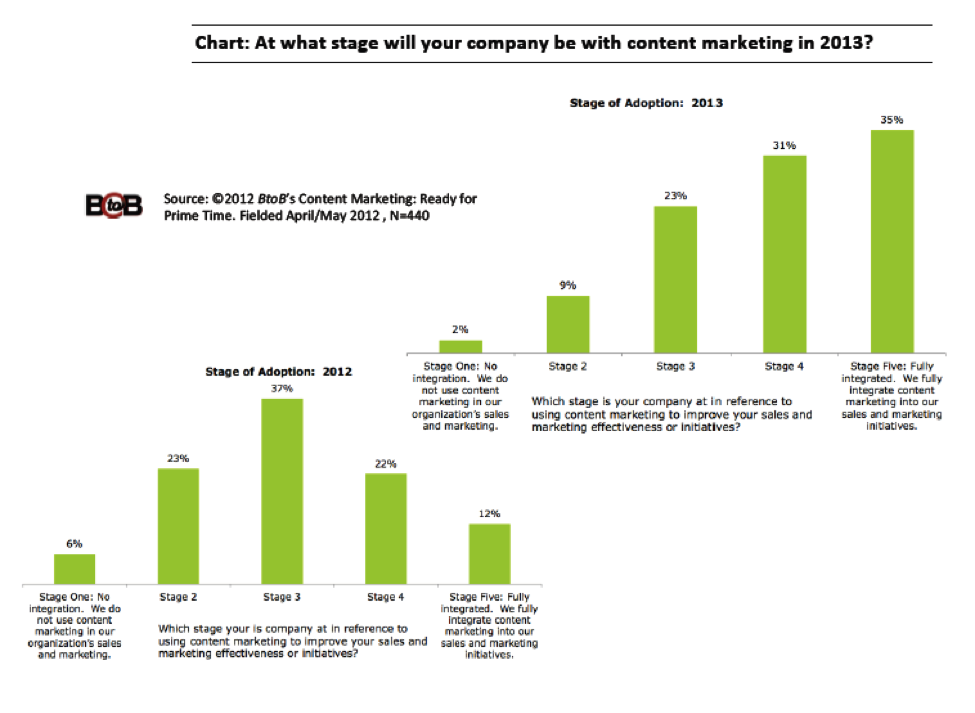 Content Marketing is Now the Number 1 Tactic for B2B Lead Generation
Content Marketing is Now the Number 1 Tactic for B2B Lead Generation
From the same study, according to marketing professionals surveyed, over 51% see content marketing as the most important tool for B2B lead generation.
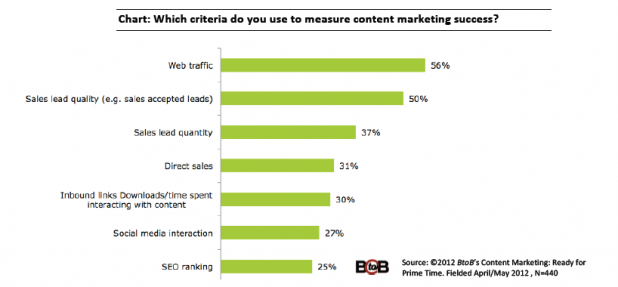
Content Helps Your Sales Team with Higher Quality Leads
What’s even more dramatic is the shift that we now see in marketers’ understanding that content is critical for helping them to improve the performance of their lead generation, now that a full 50% of lead generation specialists are embracing the use of content marketing to help generate better quality leads.
Content Marketing Challenges
Content marketing requires a commitment and, according to a Marketing Sherpa study earlier this year surveying early adopters and champions, the biggest challenges you will face if you have not yet embedded a content marketing practice into your organization are outlined in the chart below:
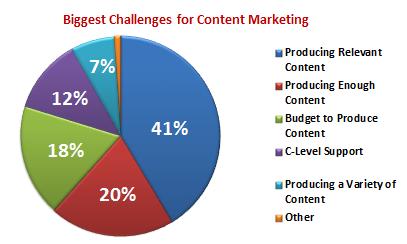
This is where an outsourced sales and marketing organization like Gabriel Sales can help. To learn more about how we use content marketing to help your organization improve its B2B lead generation, sales qualification and sales education process, feel free to check out our blog series: Digital Content to Automate your Sale, which is a crash course in integrating sales and marketing efforts. Also, check out our Quick video overview that explains “How to Build a Demand Gen Engine”. If you are ready to chat, request a quick review to see if we can help.
Additional Blogs in this Series:
Part 1 – Increasing Your B2B Sales Volume and Revenue – What’s Changed?
Part 2 – What Does Your B2B Sales and Marketing Culture Need to Look Like?
Part 3 – What Core Competencies do I Need From My Marketing and Lead Generation Team?
Part 4 – How Can Marketing Automation Improve My B2B Sales Performance?
Part 5 – Why is Content Marketing is Now Required for Quality B2B Lead Generation?
by Glen Springer | Nov 13, 2012

Technology Will Accelerate Marketing’s Impact on Revenue
In Part 1, Increase B2B Sales Volume and Revenue and Part 2,What Does Your B2B Sales Approach and B2B Marketing Culture Need to Look Like?, we discussed the new situation in B2B sales and how the buying process has changed, how marketing is more important to your sales process than ever, and how you may need to alter your sales process and augment your team.
In part 3, we outlined the 11 core competencies required to build a successful b2b demand generation marketing program that puts your buyers and their buying cycle (as opposed to your sales cycle) at the center of your sales and marketing process.
Now, in part 4, we explain the five key ways that marketing automation and sales technology can quickly shift your culture and help your sales team be more effective. The five ways are:
- Lead Capture
- Lead Qualification
- Email Automation
- Lead Intelligence
- Real Time Lead Alerts
Here’s a brief explanation of how each of these features will help your sales team:
Lead Capture
For example, Pardot Marketing Automation Software allows you to identify companies that are visiting your site without the need for any information to be collected on a form. There is a database of IPs that identify the company. The major value here is identifying potential prospects without waiting for contact info to be submitted, using 3rd party data providers like Inside View, LinkedIn, One Source and SalesForceData to more quickly identify the key contacts within the companies visiting your site. These 3rd party data providers also help you pull in additional missing data points about the company and key contacts.
Just as important is actually capturing leads with landing pages and forms. That is nothing new, but the ability to then implement strong lead management rules helps hand over qualified prospects automatically.
Lead Qualification
There are two main ways to qualify leads: using implicit behaviors and activities and explicit data and demographics.
Using implicit information and lead scoring, you can rank and score activities (email, web and social) variably by importance and then set up actions to pass the top scoring prospects over to a sales rep automatically.
Using explicit data and lead grading, you can qualify a prospect on who that person is, e.g. a CEO versus a workaholic just trying to learn something new by requesting your content. You can also change grades up and down based on industry, company size and other factors. Essentially, it’s grading prospects against an ideal customer profile that your sales and marketing team identifies.
Along with helping your sales team avoid talking to bad prospects, using these grades and scores provides you another way to dynamically pre-qualify and assign the best prospects to your sales rep.
Email Automation
Email automation for sales reps takes their knowledge about and performance with their leads to another level. Reps can now use email integration tools for Outlook, Gmail, Apple Mail, and Thunderbird to send personal emails through their marketing automation tool, This allows them to personally track opens and clicks with automatic notifications being sent back to the rep when these actions are taken.
Another powerful email automation component is personalized email marketing campaigns, where the marketing team can craft a message to the companies entire pool of prospects, yet dynamically assign the “From” and “Email” field of the lead’s assigned rep. This serves two main purposes: 1) the rep will get the credit for a pleased lead being sent valuable content (yet the rep didn’t have to do anything – marketing and software took care of the touch for them) and 2) all replies to the content will go directly back to the rep (plus, the rep can also be notified when their lead interacts with that message).
A bonus aspect to email automation is the sales rep can pass back “not-yet-qualified” leads to be nurtured by marketing and allow for further lead qualification. The sales rep can be notified again once the lead qualification status has been improved based on the lead’s content interaction activities and scoring rules.
Lead Intelligence
Sales reps will be able to track all online behaviors (email, website and social) and that data can be put directly into the CRM that the sales rep works from, e.g. Salesforce, instead of requiring the sales rep to learn the ins and outs of the marketing automation prospect tracking system (though they probably will want to once they see how much more effective they are). Activities like original lead source, specific page views, keyword searches, webinar attendance, etc., can all be tracked. This allows the sales rep to profile and frame the content for conversations, voicemails and follow-up emails based on those specific prospect activities.
Real-Time Lead Alerts
Real-time lead alerts allow sales reps faster response time when companies or leads are actively engaged in the sales education collateral. Sales reps can receive instant alerts or daily email summaries regarding these activities. They can receive instant alerts via email, text messaging, mobile apps, and desktop apps, whichever they prefer.
With these alerts and summaries Reps can:
- Prioritize their day with the most active prospects
- Perform quick lookups of anonymous visitors in LinkedIn or Jigsaw to identify potential new prospects
- Click on links to trigger CRM profile lookups
- Send emails to active prospects with a few quick clicks
- Filter out unwanted activity
All of these features, Lead Capture, Lead Qualification, Email Automation, Lead Intelligence and Real-Time Lead Alerts, save your reps time and make them more successful. An effective integration and use of marketing automation can synthesize marketing and sales objectives and improve the effectiveness better than ever.
If you are still a little skeptical that marketing automation and content marketing are going to be critical to your success we invite you to check out our blog Content Marketing is Now Required for Quality B2B Lead Generation that will give you a little background on the risk you are running and the cost of delay.
If you want to learn more about how Gabriel Sales can combine your product knowledge and thought leadership with our sales and marketing automation expertise to get you in the game faster, request a complimentary review. If you want to review more information, download the White Paper for Tactics you can implement now.
Additional Blogs in this Series:
Part 1 – Increasing Your B2B Sales Volume and Revenue – What’s Changed?
Part 2 – What Does Your B2B Sales and Marketing Culture Need to Look Like?
Part 3 – What Core Competencies do I Need From My Marketing and Lead Generation Team?
Part 4 – How Can Marketing Automation Improve My B2B Sales Performance?
Part 5 – Why is Content Marketing is Now Required for Quality B2B Lead Generation?
by Glen Springer | Nov 11, 2012
 In Part 1 and Part 2 of this series, we discussed how buyers have changed the way they buy and why your approach to sales and marketing needs to change if you want more deals, to grow revenue, and to increase profit. We also discussed why your strategy needs to align sales and marketing around a pure focus on the customer “buying” cycle.
In Part 1 and Part 2 of this series, we discussed how buyers have changed the way they buy and why your approach to sales and marketing needs to change if you want more deals, to grow revenue, and to increase profit. We also discussed why your strategy needs to align sales and marketing around a pure focus on the customer “buying” cycle.
We pointed to the fact that companies who:
- Are ready for a longer sales cycle
- Educate their buyers first
- Create a shared scorecard to align sales and marketing
- Embrace emerging sales and marketing technologies
- And budget appropriately
have grown revenue 157% over the past 2 years while also reducing the total cost of sales.
In Part 3 of this series, we will discuss the core competencies and disciplines you’ll need to support to make this type of growth a reality.
What is B2B Lead Generation vs. B2B Demand Generation?
Before we get started it’s helpful to understand what we mean by b2b lead generation vs. b2b demand generation.
B2B Lead Generation – For Gabriel Sales, lead generation is about putting targets into your sales funnel at the very front end of the pipe. Adding a lead is simply finding a qualified person from a particular company that is interested in learning more about your product or service.
B2B Demand Generation – Is the process of moving that lead through a sales and marketing process to educate the buyer, bolster interest, and prepare them for speaking with the sales team.
Once you have a team in place that’s able to get the “B2B Demand Generation” process right, lead generation will become much easier.
1) Content Strategy: First, you’ll want to talk to your best sales reps to understand who your ideal targets are by decision maker type. Next you want to clone the sales process of these top sales reps to figure out what is the best thing to say to early-stage targets, what are the best early-stage offers, and what are the most frequent objections or questions in the early-stage sales cycle. You then need a content mapping tool and calendar to prioritize educational content based on the needs of your buyer and your sales team. We have developed a simple tool using Excel that is then shared in the cloud so it’s a live, agile marketing document. Someone will need to manage this document. It’s important that your content ultimately supports the sales script so the two work together to move deals into the pipe in tandem always focused on moving the buyer to the next step.
2) Content Production: It’s cliché but content is king. It drives traffic, provides value and converts visitors to subscribers and customers. Producing quality content is essential. Creating content is not the place to cut corners or try to shave costs. If done well and consistently, you’ll become recognized as a thought leader in your industry. This is a fantastic opportunity for you to differentiate yourself from your competition, because most companies don’t commit the time and resources to actually produce regular, quality content. Content then becomes quite literally an asset.
You’ll also want to leverage each piece of major content at least 3 times. So for example (and why we love webcasting) – if you commit to 1 to 2 webcasts per quarter you can typically turn that webcast into a white paper, create 3-5 shorter 1 to 2 minute video clips, and generate 7 to 8 blogs all from that initial piece of thought leadership. Take the content that you already know is engaging and working for your sales reps and product specialists in a live context and convert it into alternative, digitized pieces of content to distribute and share with your larger, not-yet engaged audience of early-stage buyers.
3) Content Management: Selecting a quality Content Management System (CMS) like WordPress is the first step in the content management process. You’ll also need to staff a resource to maintain your content schedule, add and edit content, and publish it into the right channels. Ideally, this same someone would also know how to contextually repurpose and publish your content. You also need to have the capability and capacity to create landing pages at will for specific verticals and decision makers to aggregate and focus your content for specific markets and buyer types. Gabriel Sales Digital Sales Base Camp™ was created to make this part of your content management seamless and efficient.
4) Email Management: Learning the rules, regulations and best practices of email marketing and management is not a core competency of many companies. A ‘Ready Fire Aim’ approach that doesn’t work when doing email marketing. Proper messaging, design (e.g. smart-phone compatibility), list segmentation, privacy/spam rules, auto-responder optimization, and more are all major factors in doing email marketing correctly. Many companies just blast their entire list and hope for the best, time and time again. Many others simply don’t do email marketing at all! The discipline is still required as a B2B lead generation tactic.
5) CRM Integration and List Acquisition: Making sure that all of your communication and analytic tools are synchronized with your CRM is an under-utilized practice, but one that can be the defining difference between converting a hot lead and losing a deal. Without conversions, b2b lead generation efforts mean nothing. You also need to make sure you are not spending money acquiring lists that don’t make sense or are redundant.
6) Landing Page Optimization: Use landing pages to deliver your critical content in an organized way that also promotes a compelling, ‘easy to take’, and singular call to action. This is an essential but usually undeveloped practice in many businesses’ web marketing/lead generation efforts.
7) Analytics and Database Management: The tools and methods of data discovery go into greater depths than ever before, but solid logic for how business decisions are made against all of this data are still lacking for many organizations. Companies spend incredible amounts of money for the tools but lose out on much of the ROI by not investing in the staff and education to actually use them to demonstrate meaningful insights. See Analytics Expert, Avinash Kaushik’s often-cited blog article on the 90/10 rule of web analytics success.
8) Graphic Design and Video Production: Having quality graphic design at the right times can set you apart from many competitors. Having the ability to take your existing presentations, customers and thought leaders and allowing them to get their best material circulating digitally will save your team 100s of hours annually educating customers.
9) Social Media and Reputation Management: Creating active engagement with your potential customer base in the major social media channels (Facebook, Twitter, LinkedIn and Google+) is an ideal to which your business should strive. Getting these profiles going is a step that many businesses have been reluctant to take and is necessary for mature b2b lead generation. Further, setting up tools to manage your company’s on-line reputation (e.g. creating alerts anytime your product, brand, management team is mentioned online) is becoming increasingly important to properly leverage positive feedback from brand champions and limit the influence of detractors out to destroy your business’ reputation.
10) Marketing Automation: This is the wave of the future for marketers and sales people, alike. Aside from investing in one of the top marketing automation tools (such as Pardot or Marketo), making an equal or greater investment in human resources to optimize your marketing automation is the next logical step. The added intelligence gained (e.g. lead scoring, real-time visitor analysis) and the powerful tools available (e.g. automated rules, logic-based drip campaigns, page actions) will transform your lead generation and sales prospect prioritization beyond anything you’ve done before. If you are unfamiliar with marketing automation, now is the time to educate and get on board. GS is an authorized Pardot Agency Partner (among several other technologies) so we have a bias for Pardot and we can offer unparalleled ability in implementing and optimizing these tools to quickly accelerate marketing results for any business. If you have never checked out a marketing automation demo don’t hesitate and take the time for a 5 Minute Overview of Marketing Automation right now!
11) Phone Resources: Effective lead generation and lead nurturing still requires people to pick up the phone. You need to strongly consider attaching reps to your marketing team and not your sales team. In terms of demand generation there is a difference between ‘educating’ buyers vs. ‘selling’ buyers. Getting this part wrong can destroy your entire investment up to this point. Getting this part right will give you a huge leg up on your competition because:
- 70% of leads are passed to Sales Reps before they are ready to engage (Marketing Sherpa -2012)
- 80% of mishandled leads will buy from a competitor (Forrester -2011)
And if you have the other pieces we’ve described above in place, like quality content production, marketing automation and social media management, your phone reps will have an easier time with b2b lead generation and creating engaged, meaningful discussion with prospects and the end results will be far more beneficial to your conversion goals.
Summary
The seismic shift we are seeing right now essentially means that marketing now needs to own the prospect much earlier in buying process and take them much deeper. The goal is to connect the buyer with the sales rep when the buyer is ready to buy. This approach leads to faster transactions and maximizes the sales reps time. The line between sales and marketing as it applies to demand generation is getting blurred and this trend is not going to abate any time soon. You need to softly press for next steps with both your reps and your content. This is why its key to pull in a marketing automation platform will accelerate your ability to pull it all together to score a prioritize leads. In Part 4, we’ll discuss in more detail how marketing automation can help your sales and demand generation process.
The job and landscape is getting more complex. So who is going to actually do all this work? How do you find marketers that understand sales and sales staff that understand marketing? This is where considering to outsource to a b2b lead generation company with expertise in outsourced sales and marketing may be able to help. So feel free to request a free consultation if you are curious how we can help.
Part 1 – Increasing Your B2B Sales Volume and Revenue – What’s Changed?
Part 2 – What Does Your B2B Sales and Marketing Culture Need to Look Like?
Part 3 – What Core Competencies do I Need From My Marketing and Lead Generation Team?
Part 4 – How Can Marketing Automation Improve My B2B Sales Performance?
Part 5 – Why is Content Marketing is Now Required for Quality B2B Lead Generation?
by Glen Springer | Nov 8, 2012

As a recap of the first blog in this series – we know that the buying process has changed dramatically over the past several years. The buyer, not the seller, now controls the sales process and that process is being “consumerized”. In Part 1 of this series we discussed what you need to consider and be prepared for if you are ready to drive some meaningful cultural change and increased revenue for your organization. Part 2 we will now discuss how your culture, attitude and team dynamics may need to shift to facilitate you customer’s buying process not your sales process.
You need to be prepared for a longer sales cycle. You need to accept that buyers have extended their purchase cycle by 1.5X since 2008 (Sirius-2012) and revenue growth is now going to be both a marathon and a sprint. Your sales team job still needs to be focused on hitting monthly, quarterly and annual sales targets. You need to accept that they may get some deals into the pipe that are going to go through the first several stages of their buying cycle and your sales cycle and then the buyer is going to hit the pause button. You need to have a plan for what happens when this occurs. Does the lead stay with the sale rep or does it go back to your inside sales team? Is there a way to stay in front of them without the sales team wasting time and spinning their wheels?
That your buyers want and expect to be educated first. You may need to embrace the need to develop some new disciplines and commit to content marketing. This is probably the most radical change and your most significant opportunity. Marketing is going to need to take you buyer further through your sales process because that’s what your buyers want. The days when you generate a lead and toss it over to sales are over. And marketers can’t do this alone. They will need the support and contribution of your executives and product specialists as thought leaders. If your marketers can leverage your thought leaders, they can exponentially support your sales team and keep them focused on selling. Marketing can take care of early stage engagement. If you marketer has never been a sales person they may need some help on this front.
Sales and marketing need to work together. The days of working in a silo are over. For a lot of companies this is the biggest hurdle because it’s cultural. Sales doesn’t always care what marketing does (they just want more leads) and marketers don’t think sales appreciates or even understands what they do (and they are often correct). Like any successful team to compete and win, you are going to need to align sales and marketing with the tools, content, and processes you need to support your inside sales reps with the content you need to demonstrate your thought leadership and differentiators. There needs to be mutual respect.
Embrace technology. Because technology can bring the sales and marketing teams together – with the advent of marketing automation platforms, Google Analytics, and CRMs, you can now define and implement a Sales Architecture, Infrastructure, and Technology Platform that provides complete transparency and accountability throughout your entire sales process. Keeping score helps teams to flourish. This isn’t rocket science. Just head out to any Little League or Soccer Field on a Saturday during a game and compare it to what happens during practice. During practice the energy level and focus waxes and wanes. Put them on the field when they are accountable for a score and measured on the results and everything changes and it’s a great deal more fun as well.
You need to budget appropriately. As we mentioned previously, sales is now both a marathon and a sprint. While we appreciate the need and pressure to hit quarterly numbers, don’t expect a process to fall in place that quickly. You need plan on investing in this engine for at least 4 to 6 months until you will start seeing consistent results. As the process becomes imbedded into your culture and your teams align and start firing on all cylinders, revenue will go up and costs of sales will start to decrease. This double gain allows you to take your new revenue and your cost savings to grow the engine producing exponential results.
Summary – The line between sales and marketing is getting blurred
- Your buyer now wants to be educated
- They want access to your thought leadership and your product specialists for deeper education
- Your thought leaders can’t spend time on deals that just want to be educated
- Your buyer does not want to engage with sales until they are educated and ready to buy
- You need to demonstrate you understand their situation and pain before your prospect will engage with sales.
Everyone understands the social contract between salesperson and buyer. The sales person’s job is to sell and the buyer’s job is to buy. Pain, gain, and solution selling are still important but, more and more, rather than having a sales rep get on the phone saying “lets understand your situation”, it’s becoming the job of your inside sales team and your marketers to do this by sharing thought leadership from your product specialists. Pressing the buyer to buy and introducing a sales rep prematurely before they are ready engage may win you a couple of deals in the short term but, it will drive even more deals into your competitors’ arms.
So the question is what does my sales and marketing organization need to look like to create demand for my sales team now that marketing’s job is to take my buyers well beyond creating awareness and driving leads into my sales funnel? Here is our next blog in the series that outlines The Core Competencies I Need From My Demand Generation Team.
If you want to learn more about how Gabriel Sales can apply some of what we have learned for your business specifically, request a complimentary review. If you want to review more information, Download the White Paper for Tactics you can implement now that will jump start your transformation immediately.
Additional Blogs in this Series:
Part 1 – Increasing Your B2B Sales Volume and Revenue – What’s Changed?
Part 2 – What Does Your B2B Sales and Marketing Culture Need to Look Like?
Part 3 – What Core Competencies do I Need From My Marketing and Lead Generation Team?
Part 4 – How Can Marketing Automation Improve My B2B Sales Performance?
Part 5 – Why is Content Marketing is Now Required for Quality B2B Lead Generation?
by Glen Springer | Nov 2, 2012

Selling No Longer Works This Way!
This is the first blog in a four part series that talks about how to increase b2b sales volume, including the radical shift in B2B sales and the changes you can start to make to your to B2B lead generation and B2B demand generation tactics, and B2B sales tactics to set a course that can more than double your volume and revenue growth over the coming 18 months.
The series will discuss what has caused the shift in B2B sales (as a hint buyers don’t buy the way the used to), how this change in volume and revenue impacts your business and why you may need to change your approach , why marketers are more important than ever in your sales process and how you can turn this knowledge into a significant B2B sales and B2B lead generation advantage in 2013 to shift your approach to get it right.
And there is no doubt that you need to get it right because according to a recent study by Adam Needles companies that have embraced selling to the buyer the way they want to buy have seen an increase in revenue of 157% over the past 2 years. Companies that continue to sell “old school” (banging the phone, blindly running campaigns, and relying on solely on tradeshows and the occasional webcast) have seen stagnant sales while simultaneously experiencing an increase in what it costs to sell. Double downside vs double upside.
The good news is that, according to Forrester Research, we are still only at 10% market adoption of companies that have totally nailed the new paradigm, so you can turn your competitors ignorance into your gain. The even better news for Small Businesses is that according to the same study it takes a Fortune 2000 competitor 18 months and twice the costs to turn around their culture because of the fiefdoms and resistance inherent in larger organizations.
What’s Changed
So what’s changed? Unless you have had your head in the sand you know that its tougher to get your buyer on the phone (our connect ratios – someone picking up the phone on the other end when you dial has dropped from 18%-21% to 6%-11% over the past 2 years). And we all know that the sales cycle has increased volume and revenue by about 1.5X to 2X (that’s months, quarters or even a calendar year depending on your sales cycle. It’s not rocket science to figure out that the buyer and not the seller now controls the sales process. That simple fact is the one thing you need to keep top of mind throughout this series.
Buyers are More Risk Adverse
It’s not 2006 anymore. The stock market bounces up and down daily. Experimental budgets have been cut. There are both real and imagined geo-political and domestic issues that get exacerbated and hyped by a 24 hour news cycle. There is a great deal more that is perceived to be out of our control so if you have a budget you do control folks are now much tighter with it. Buyers want to be smarter and more cautious before they buy.
There are more people involved in the buying process
Since 2009 there are more people involved in the buying process (confirming the point above there is safety in making “group” decisions). According to a Marketing Sherpa Study there are typically three people involved in transactions of 25K to 100K and four to eight people involved in a deal over 100K. And, according to the Harvard Business Review 90% Buying decisions now require both a technical decision maker and business decision maker in the final decision. All this requires your team to educate and sell to more people with different needs. In a nutshell companies are staggeringly more risk adverse and being much more diligent in their decision making process.
Software as a Service, Telco and Apple (among others) are turning B2B sales experience into a consumer sales experience for everyone
SaaS companies have done a great job turning a B2B sale in a “consumer” purchase experience. You come into the website, find the product you are looking for, research it and then in some cases just plug in your credit card. Buyers can in most cases never even speak with a sale rep unless you ‘the buyer’ feel the need to reach out to speak to a sale rep. This coupled with the fact that buyers can now make larger consumer purchases like smart phones, computers, and even cars by doing their own research and placing an order has made them even more comfortable buying without a sales rep. Consider how you purchase your home media now. I personally have bundled phone, internet, a cable sports package and layered in Netflix and Hulu streaming through a Blue Ray and my kids Wii without ever speaking with a “sales person” except to schedule an installation. Finally look at your experience in an Apple store. The “sales” people greet you, let you (and your family play) with the technology, have you queue to get help and then pull out an iPhone to take your $500-$2K. B2B sales and marketing teams have had the bar raised and need to strive to improve the ease of education and purchase wherever possible.
Why digital sales content is now critical
YouTube, Webcasts and Podcasting Twitter and Facebook may feel like they have been around forever but its only been several years. And serious adoption in the B2B sale is less than a couple years old. The average buyer now consumes 12 pieces of digital sales content before they purchase (up from 5 in 2011) and this trend is expected to continue.
Similar to SaaS sales and other technologies we discussed above consider how your family or friends now consume “entertainment” media. When I looked around my living room a couple nights ago my wife was on her iPhone posting videos of the kids for the grandparents on Facebook, while catching up on Twitter, my son was on the iPad checking out 2012 MLB stats, my daughter was self-publishing a “picture book” on the desktop and I was watching an NFL game (while DVRing the Amazing Race), flipping through the Sunday New York Times on my iPhone and pulling Google Analytics report for a meeting on Monday that compared mobile traffic during a time period in 2012 vs. 2011 (see below).
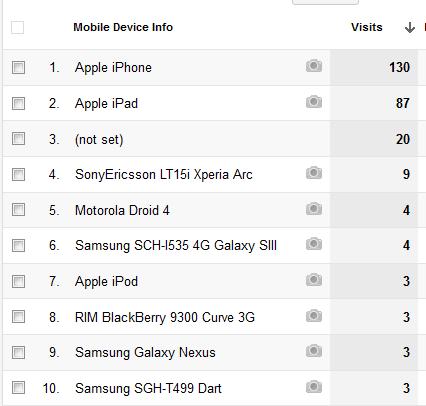
Mobile Traffic Oct 2012
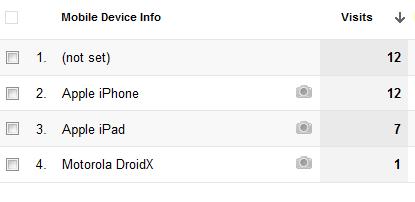
Mobile Traffic 2011As consumers we are used to consuming content where we want to and when we want to. We are consuming across platforms. We are mixing our consumption of entertainment and work related content throughout the day and evening. And it’s easy. We now feel entitled. The same philosophy needs to be applied to how you sell to the B2B buyer. If they want to consider purchasing your solution on a Sunday evening let them.
Bottom line you need digital content because there are more people involved in the buying process. You need to share it effectively and you need to deliver your message in multiple formats so your buyer can educate and buy on their timeline and schedule, not yours.
You need to meet the buyer where they are in their buying cycle and not force them into your “sales cycle”
Inbound leads are coming much earlier in the decision making process when buyers are still at the education phase which means your initial job as a sales and marketing team is to educate first. This means you need to help educate a potential buyer before you “sell”. This gets tricky because this can increase your costs if you are over investing in “selling” to buyers that are not ready to transact. The flip side and potentially even more daunting is that we are now seeing that 25% of your buyers make their purchase decision after self-education and calling a sales rep after short listing online (Sirius -2012). This means that your team needs to be able to quickly figure out where a buyer is in the buying cycle quickly so they can treat them appropriately. So there is both an upside and a downside it getting this right.
If you sell too hard early we know that:
- 70% of leads are passed to Sales Reps before they are ready to engage ( Marketing Sherpa -2012)
- 80% of mishandled leads will buy from a competitor (Forrester -2011)
If you get it right we know that:
- “Well nurtured leads close 23% faster and result in 40% more revenue” (Aberdeen-2012)
Summary
What’s happening right now is not a small shift. It’s the final transformation that was the promise of a connected world when the Internet first reared its head in almost 30 years ago. And in the last 2 years the shift is accelerating dramatically. Since the birth of modern banking during the Renaissance (and possibly before) the majority of transactions have been driven by a seller and buyer relationship. The seller had information and shared it with the buyer and then the buyer bought. What we are witnessing right now is the final stages of the seismic shift that has been slowly taking place since we first got the internet in the mid 90s and Google organized it for immediate access 10 years later. They buyer now expects to be able to buy without the intervention of sales whenever possible. They expect honest and authentic information and they want it now. If you don’t get prepared to do this for your buyer – to make this process fast, easy, not deeply sales rep dependent and your competitor does you will lose.
To learn what this cultural shift means for your own sales and marketing culture please check out the next blog in this series for things to consider as you ponder the obvious question What Does All this Mean for Your Business?
If all this seems a bit daunting in the short term you can also feel free to check out our Sell Smarter and Sell Fast Whitepaper to learn about short term tactics you can implement on your own right now.
Here are some quick links for additional reading:
Part 1 – Increasing Your B2B Sales Volume and Revenue – What’s Changed?
Part 2 – What Does Your B2B Sales and Marketing Culture Need to Look Like?
Part 3 – What Core Competencies do I Need From My Marketing and Lead Generation Team?
Part 4 – How Can Marketing Automation Improve My B2B Sales Performance?
Part 5 – Why is Content Marketing is Now Required for Quality B2B Lead Generation?
by gabriel_sales | Sep 29, 2012
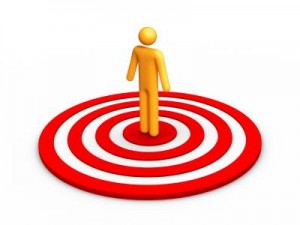 Best Practice for B2B Lead Generation – You Can’t Improve What You Don’t Measure
Best Practice for B2B Lead Generation – You Can’t Improve What You Don’t Measure
This blog will discuss a competitive advantage and a Best Practice for B2B Lead Generation for 2013. As a qualified sales lead generation company we were surprised how many B2B marketers still had a black box correlating b2b lead generation to sales return on investment. We will let the graphics below demonstrate how easy it could be for your business to gain a leg up on your competition by simply implementing a tool like Pardot in 2013 as a best practice for B2B lead Generation.
According to the 2nd annual Webmarketing123 State of Digital Marketing Survey (of over 500 U.S. marketing professionals) Search Engine Optimization (SEO), Pay Per Click Advertising (PPC), and Social Media Marketing
(SMM) are increasing in their level of adoption and spend. And spend is forecasted to continue to increase in 2013. The report when on to state:
- For B2B, lead generation is the top objective, and SEO is twice as effective as PPC or SMM for this purpose.
- Budgets: 90% of marketers will increase or maintain spending on SEO, PPC, and SMM.
- Still doing SEO in-house? Marketers using an agency are twice as likely to be highly satisfied with their campaign performance.
What we found surprising in the study are the statistics below:
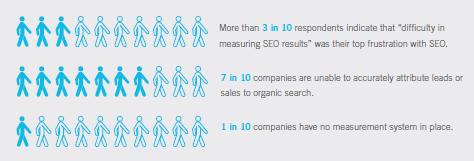
As an outsourced sales and marketing company we typically implement campaigns designed to generate leads through integrated email, SEO, PPC and cold calling campaigns. We then continue to nurture leads not ready to buy with a marketing automation platform like Pardot. An ancillary benefit of this approach is the transparency and ability to track leads directly through the pipe, for example specifically what tactics (like SEO) are doing for your revenue. Below is best practice for B2B lead generation in the form of two reports we typically leverage for both PPC and SEO on a monthly/weekly/daily basis so we can give your marketing efforts a sales quota tracking directly to the opportunity and then revenue level.


Hopefully a couple of pictures do paint a thousand words here. As we close 2012 and move to 2013 you need to ask yourself three questions around your b2b lead generation efforts.
- How do I improve what I don’t measure?
- If I do measure will it improve my performance?
- How much more revenue will I generate once I focus my marketing dollars on what’s producing?
Gabriel Sales provides b2b lead generation services and builds demand generation engines that integrate both sales reps, b2b lead gen, sales engagement and inbound marketing efforts. To see how we can help accelerate your production in this last quarter of 2012 so you hit the ground running in 2013 please feel free to contact us for a free benchmark review.
For additional info on marketing automation implementations, tips to improve the performance of your telesales team, your b2b lead generation or how to accelerate your content marketing efforts please feel free to check out the links below.
What is a Marketing Automation Platform? – 5 Minute Overview from Pardot
Selling Smarter and Selling Faster White Paper
 The numbers are in and all the experts and your peers believe that 2013 is the year that content marketing is going to cross the chasm and become a requirement to compete and win. This article is a quick recap of several studies from the past six months. If you have not started integrating and embedding a content marketing process as a strategy to support your sales and lead generation effort yet, now is a good time to start. Here is some of the most recent data to consider:
The numbers are in and all the experts and your peers believe that 2013 is the year that content marketing is going to cross the chasm and become a requirement to compete and win. This article is a quick recap of several studies from the past six months. If you have not started integrating and embedding a content marketing process as a strategy to support your sales and lead generation effort yet, now is a good time to start. Here is some of the most recent data to consider: Content Marketing is Now the Number 1 Tactic for B2B Lead Generation
Content Marketing is Now the Number 1 Tactic for B2B Lead Generation



 In Part 1 and Part 2 of this series, we discussed how
In Part 1 and Part 2 of this series, we discussed how 



 Best Practice for B2B Lead Generation – You Can’t Improve What You Don’t Measure
Best Practice for B2B Lead Generation – You Can’t Improve What You Don’t Measure


